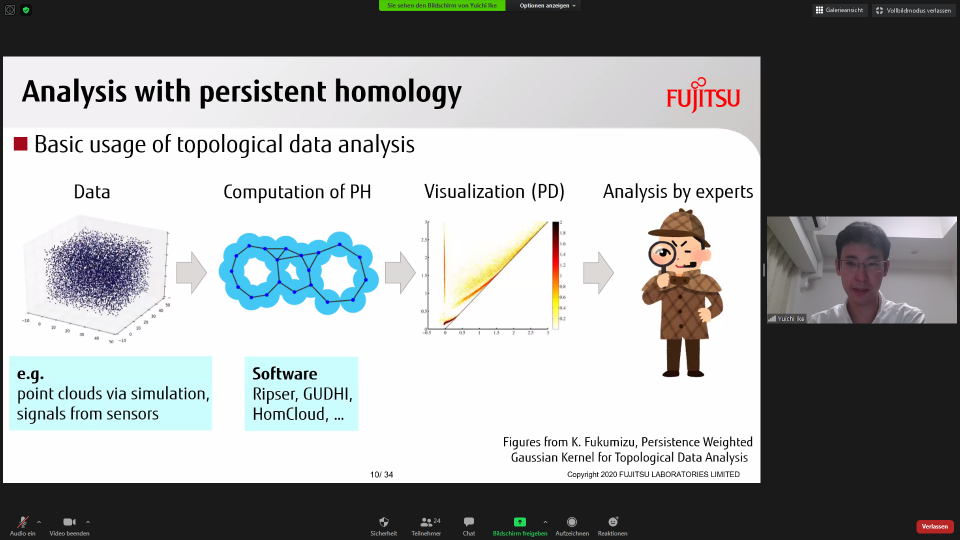Math seminar by Dr. Yuichi Ike on July 15, 2020
We have all heard that "data is the new oil". But just like any fossil resource, data also has to be worked with to use it effectively. In his talk, titled "Topological data analysis from a practical and mathematical perspective", Dr. Yuichi Ike from Fujitsu highlighted several mathematical aspects of data processing as well as relevant applications in the health sector.
In the first part of the talk, the audience was introduced to basic concepts of topological data analysis. The goal of this technique is to infer the shape of data - i.e. topological quantities such as the number of connected components, loops, cavities, etc. - from the input data points. While the shape is represented by the homology group in the continuous case, the discrete case calls for different methodology. One possible technique is the creation of persistence diagrams to identify critical components.
In a general application workflow, these approaches appear as follows. From the input data, its persistent homology is computed, visualized via a persistence diagram, and finally passed on to experts for evaluation. This has applications in material sciences and time series analysis as well as medical settings. Here, a recent work of the speaker was able to reduce misclassifications in a diagnosis setting by up to 70%.
The second part of the talk was devoted to the mathematical foundations of the presented work, namely on persistence-like distance on the sheaf category and displacement energy. Starting from elements in symplectic geometry, via a Morse theory for sheaves, the speaker integrated several mathematical fields. Finally, after introducing the non-displacement theorem, the audience learned about several proofs in the field. Thus, the talk nicely tied current relevant applications to deep results in theoretical mathematics.

